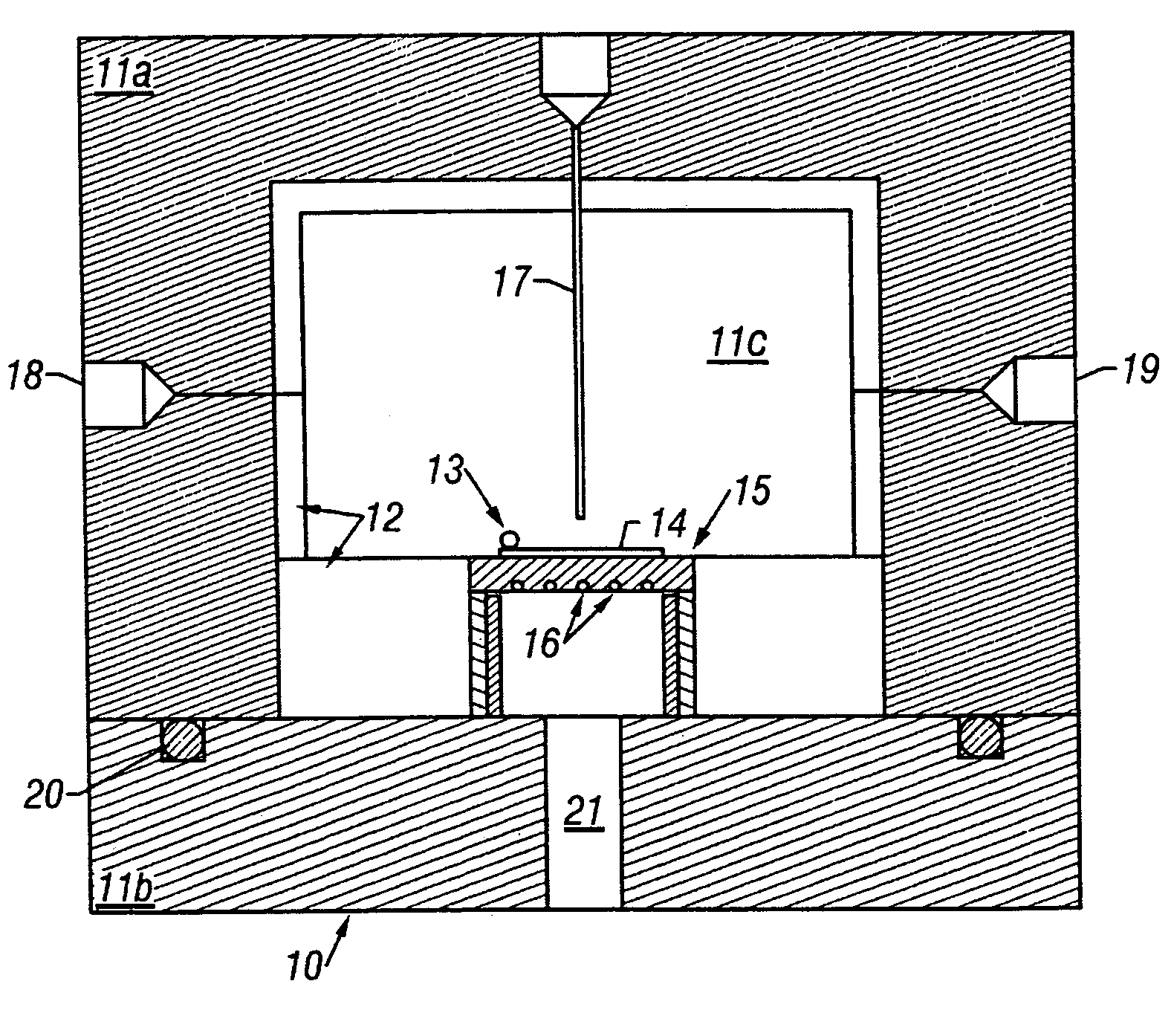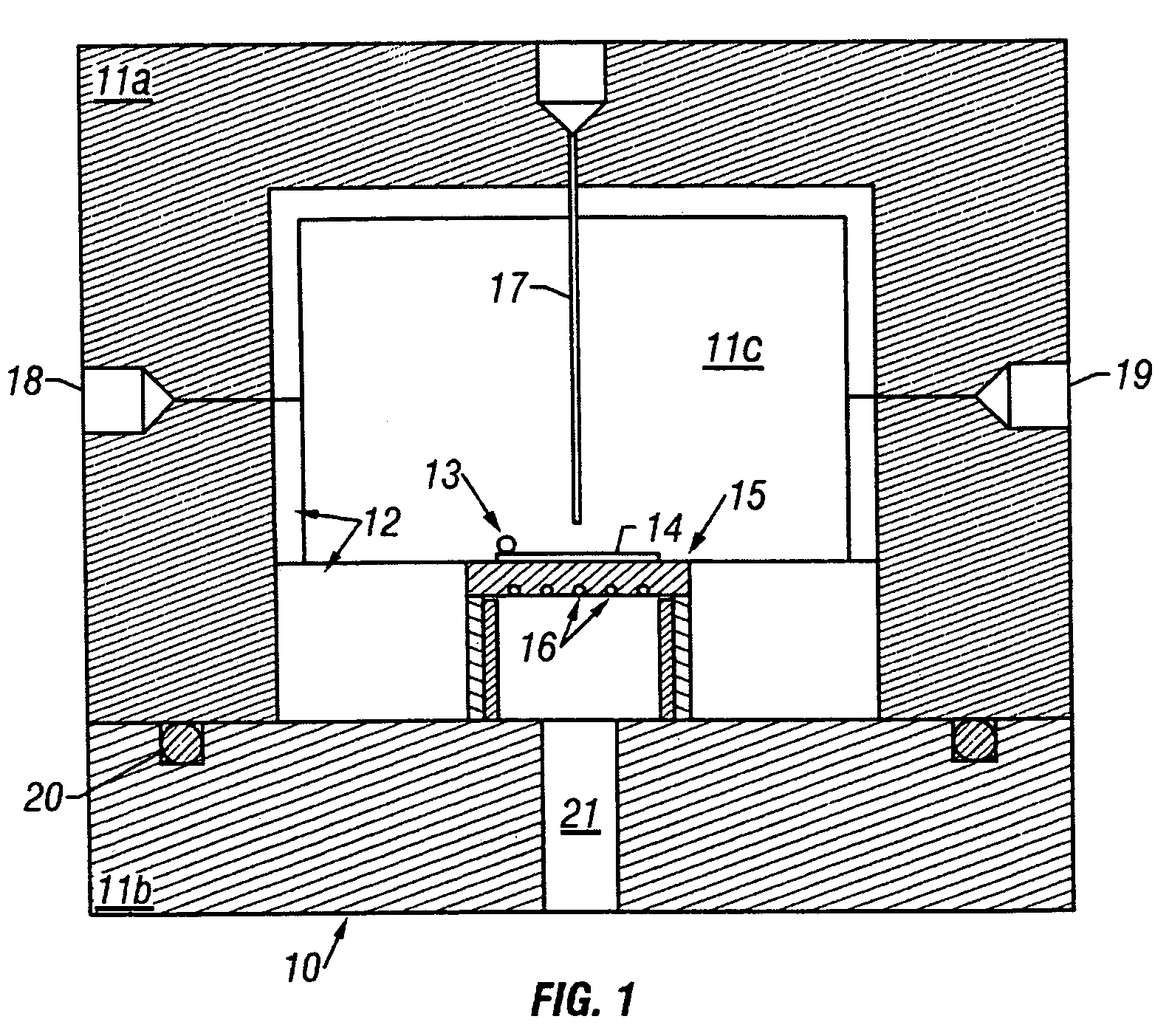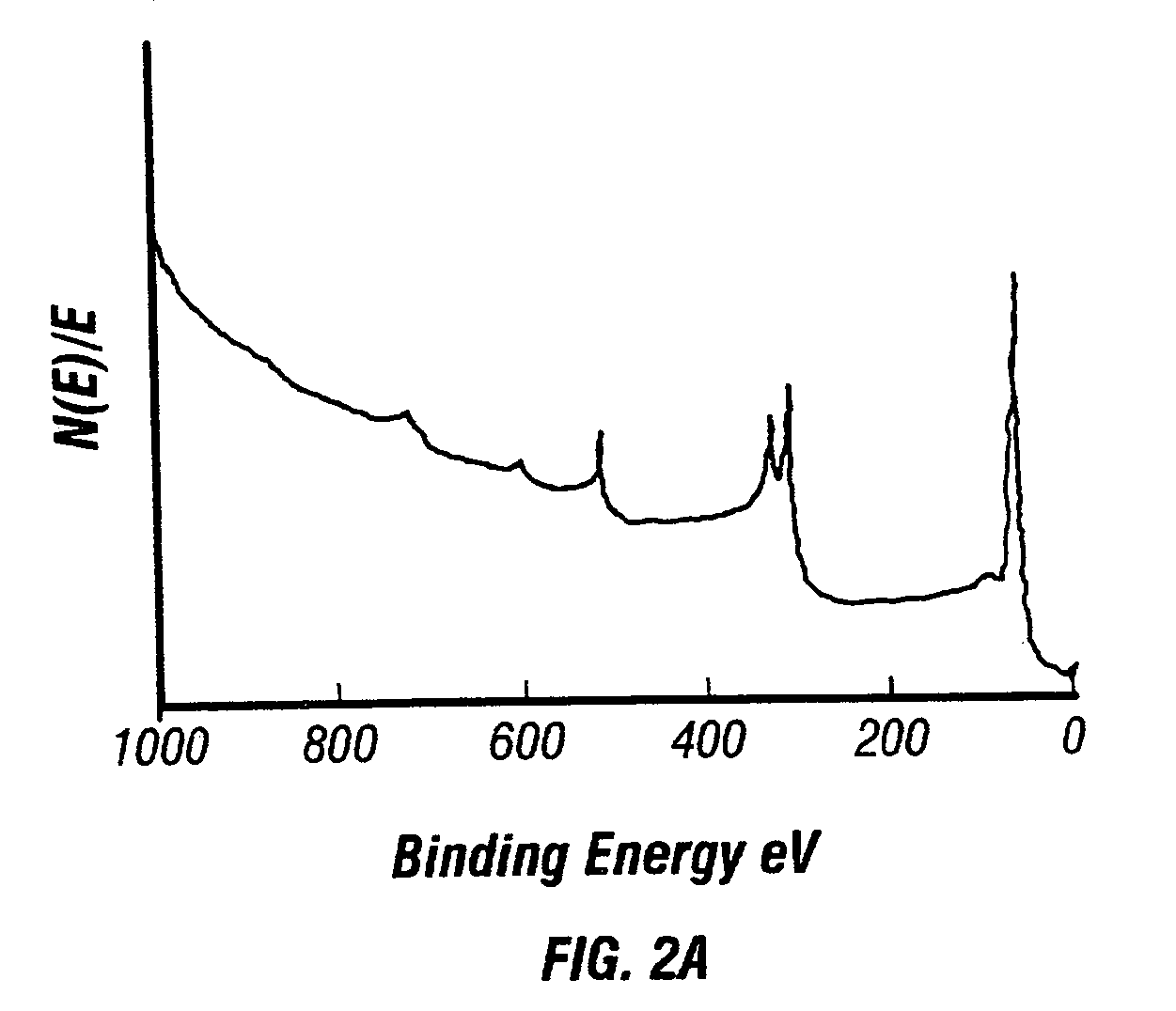Chemical fluid deposition for the formation of metal and metal alloy films on patterned and unpatterned substrates
- Summary
- Abstract
- Description
- Claims
- Application Information
AI Technical Summary
Benefits of technology
Problems solved by technology
Method used
Image
Examples
examples
[0088]The invention is further described in the following examples, which do not limit the scope of the invention described in the claims.
1. Platinum Film on a Silicon Wafer
[0089]A platinum metal film was deposited onto a silicon wafer by reduction of dimethylcyclooctadiene platinum(II) (CODPtMe2) with hydrogen gas in a supercritical CO2 solution. Polished silicon test wafers (orientation: , Boron doped type P, 450 microns thick), carbon dioxide (99.99%), and hydrogen gas (pre-purified grade) were commercially obtained and used without modification. CODPtMe2 is useful because of its high platinum content (58.5 wt. %), low toxicity of the ligands, and heptane solubility, which is a good indicator of solubility in CO2. Prior to CFD, solubility measurements of CODPtMe2 in CO2 were preformed in a view cell. Results indicated that the solubility of the precursor was greater than 1% by weight at 40° C. and 100 bar and that no degradation of precursor was observed over a range of temperatu...
PUM
| Property | Measurement | Unit |
|---|---|---|
| Temperature | aaaaa | aaaaa |
| Volume | aaaaa | aaaaa |
| Volume | aaaaa | aaaaa |
Abstract
Description
Claims
Application Information
 Login to View More
Login to View More - R&D
- Intellectual Property
- Life Sciences
- Materials
- Tech Scout
- Unparalleled Data Quality
- Higher Quality Content
- 60% Fewer Hallucinations
Browse by: Latest US Patents, China's latest patents, Technical Efficacy Thesaurus, Application Domain, Technology Topic, Popular Technical Reports.
© 2025 PatSnap. All rights reserved.Legal|Privacy policy|Modern Slavery Act Transparency Statement|Sitemap|About US| Contact US: help@patsnap.com



